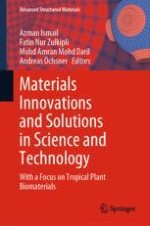2023 | OriginalPaper | Buchkapitel
6. Formulation of Emulsion Containing Chloramphenicol and Cinnamon Essential Oil for Topical Use
verfasst von : Siti Hajar Musa, Nurhanis Fasihah Muhamad, Fatin Fathia Mohd Ali, Nur’Aisyah Rifhan Mohammad Shuhaimi
Erschienen in: Materials Innovations and Solutions in Science and Technology
Verlag: Springer Nature Switzerland
Aktivieren Sie unsere intelligente Suche, um passende Fachinhalte oder Patente zu finden.
Wählen Sie Textabschnitte aus um mit Künstlicher Intelligenz passenden Patente zu finden. powered by
Markieren Sie Textabschnitte, um KI-gestützt weitere passende Inhalte zu finden. powered by
